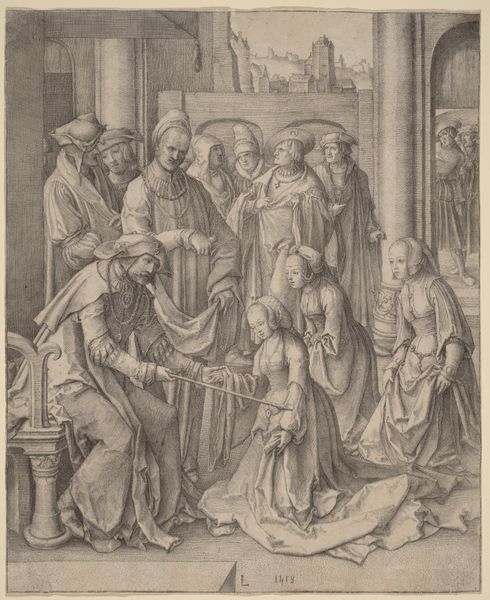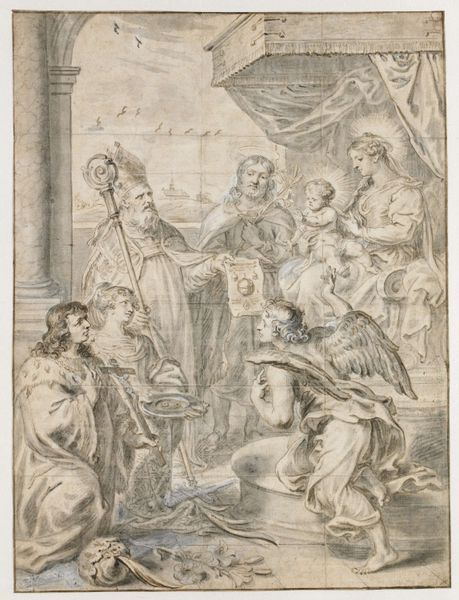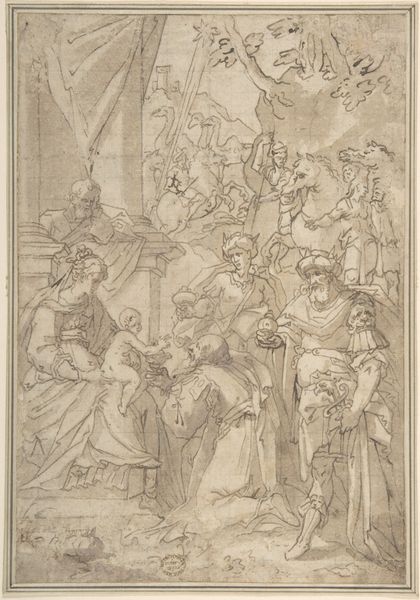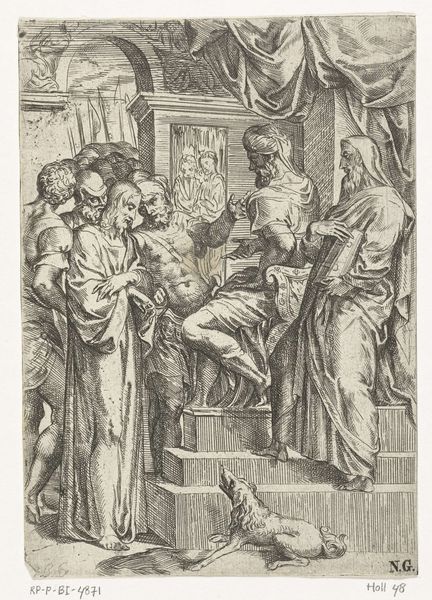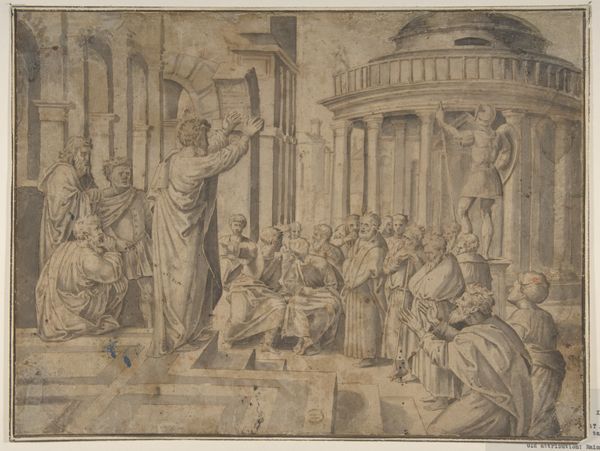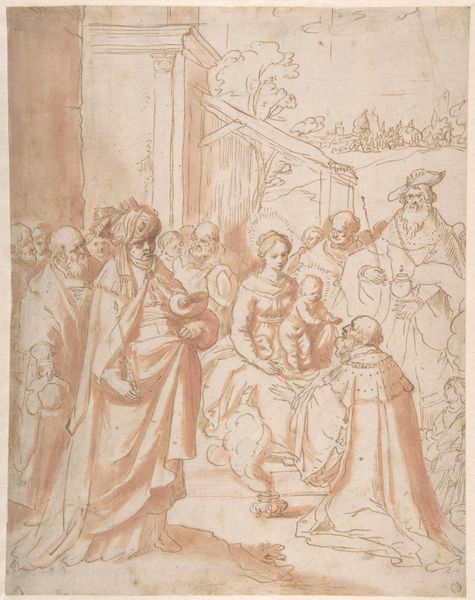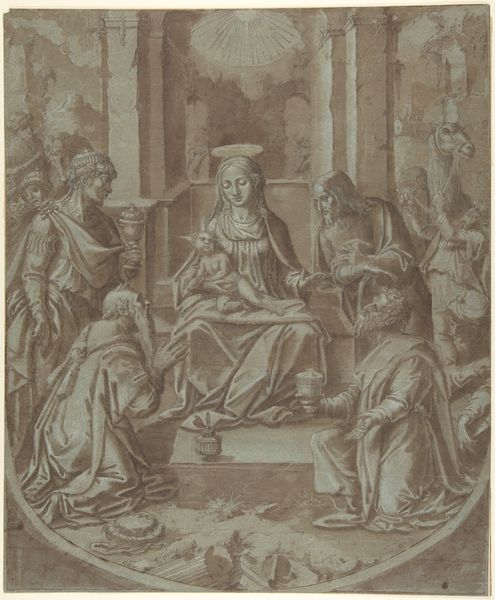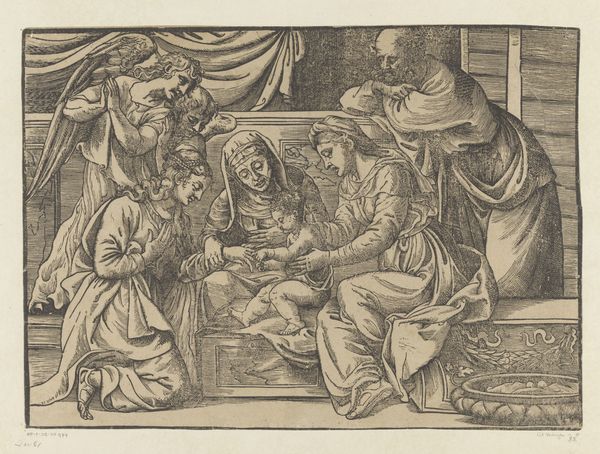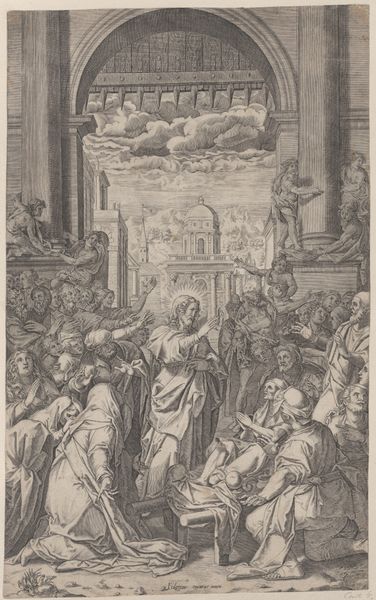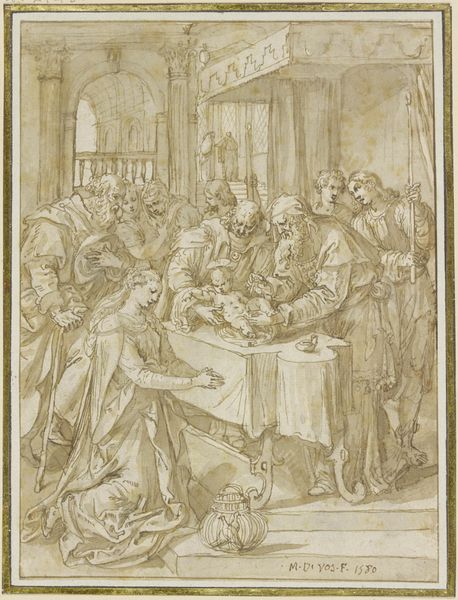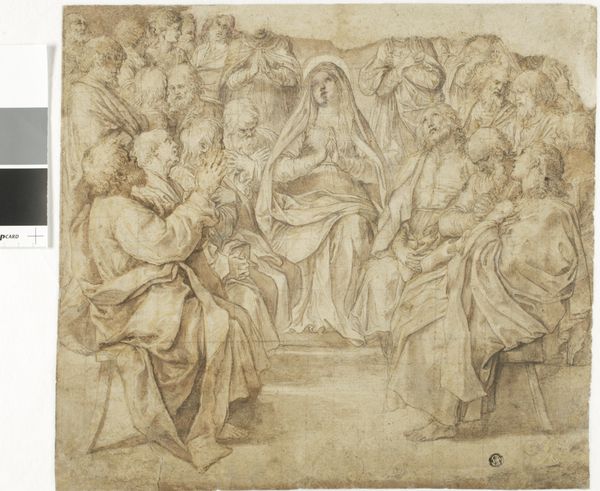
print, engraving
#
narrative-art
#
pen drawing
# print
#
figuration
#
history-painting
#
northern-renaissance
#
engraving
Dimensions: height 275 mm, width 235 mm
Copyright: Rijks Museum: Open Domain
Lucas van Leyden etched this image of Esther before Ahasuerus, sometime in the early 16th century. Kneeling before the king, Esther extends a gesture of supplication, a pose familiar across cultures from antiquity to the Renaissance. The scepter, pointed in her direction, is a symbol of royal will, of life and death, echoing ancient emblems of power. Consider how such gestures migrate across epochs. The act of kneeling—of humbling oneself before a sovereign—appears in ancient Egyptian reliefs, medieval tapestries, and even modern political theater. The scepter, likewise, from the staff of Moses to the batons of military leaders, retains its primal authority. Such symbols tap into a deep reservoir of collective memory, triggering subconscious responses to power dynamics and social hierarchies. This image reminds us that art is not merely representation, but a conduit for primal, psychological forces that transcend time.
Comments
No comments
Be the first to comment and join the conversation on the ultimate creative platform.

